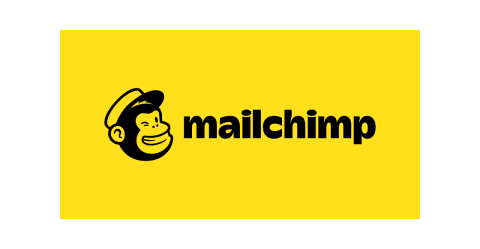Once all the planning and preparation for e-marketing communications have been completed. You are now ready to use e-marketing platforms to draft up the e-advertisement in accordance with the plan, using the selected e-marketing platform and media channels.

The e-marketing platform that is chosen to manage the e-advertisements must assist in meeting the E-marketing goals and objectives of the plan. This should be he main driver for any decision taken when planning out how to approach the e-marketing advertising. For instance, your approach in selecting media, communicated message, timing etc, must all align with meeting the goals and objectives.
E-marketing goals and objectives
Without clear goals and objectives, an organisation does not have clear direction in what it is they want to achieve and the pathway to achieve it. Once you have goals and objectives, results of a campaign can become measurable and achievable.
Some common e-marketing objectives that may fit your company's goals include
Increase revenue
E-marketing is no different. The foremost objective of any marketing strategy is to raise income. Thankfully, the internet offers a plethora of ways for any company to increase its profits.
Your firm can increase the chances of potential clients finding you online by combining search engine optimisation and pay-per-click advertising. You can also consider yourself an expert in your profession who cares about your customers using tactics like content marketing and social media marketing.
Build a brand
A frequent objective of e-marketing is to establish a brand. This includes stamping your logo and company name in the minds of customers and establishing what your organisation stands for.
Customers are more inclined to trust well-known companies, particularly if they are linked to positive connotations. The internet is a wonderful tool for creating trust because of its vast reach and ability to interact directly with folks.
Improve local SEO
Many small companies and organisations focused on increasing sales in a specific geographic region invest a substantial amount of time and money into boosting local SEO. This includes optimising various elements on their websites to attract local clients looking for the services they provide.
Although the number of searches containing both your industry and your town or location is likely to be smaller than those that specify a product or company type, those searches produce much more quality visitors. If a user is already looking for local companies, there's a strong chance they'll stop by your physical location.
Increase qualified traffic
Every company owner wants to see a boost in the number of individuals who visit their website and landing pages. Those numbers, on the other hand, are worthless if the traffic isn't the right type.
Not every person who visits your website will make a purchase. That is simply how the internet operates, and it is something that should be embraced. If no one buys anything from your website (or contacts you), you're most likely getting "unqualified" traffic or visitors who have no intention of becoming customers.
By focusing your marketing efforts on certain personas and aiming to attract specific, qualified consumers, you may enhance the ROI of your marketing efforts—as well as your bottom line.
Manage online reputation

In an age when anybody with a computer or smartphone can publish their thoughts about organisations, goods, and services for the entire world to see, businesses need to maintain a strong online image. This involves monitoring your company's reputation, maintaining social media accounts, and correctly responding to bad criticism.
Become an influencer in your field
In every field, a few well-known individuals or companies are considered thought leaders by others. They are frequently the first to communicate fresh information and remain at the forefront of new technology and ideas.
Regrettably, there is a certain amount of room at the top of any sector. Experts and influencers strategically position themselves to give good advice and information to others, often without profit.
An influential corporation, for example, might publish and disseminate blog entries and articles regularly. Their CEO and other senior executives may maintain their LinkedIn and other social media profiles up to date and share them. The company could offer free seminars on breaking industry news. All of these activities combined can help them establish themselves as an expert in the eyes of other industry professionals and potential clients.
How to use an e-marketing platform for an e-advertisement
After understanding what the e-marketing objectives are for an organisation, you can then start to use the selected e-marketing platforms. Some may include platforms such as Wask, Hubspot, Thrivehive, Marketo etc. Ensure the selected e-marketing platform is in accordance with workplace tasks and organisational policies. Every e-marketing platform, though they offer similar services, they differ in the functionality of how the platforms are used. It is important to become familiar with the platform selected to help in conducting effective e-marketing communications.
Let’s look at the use of Mailchimp.

Mailchimp is becoming increasingly popular for many business owners and marketing specialists to help manage their campaigns due to its easy-to-use, intuitive platform that can manage multiple media at once, including personal social media.
Watch the following video for an overall tutorial using Mailchimp.
Learn more about emails on Mailchimp: Emails
Learn more about landing pages on Mailchimp: Landing pages
The following video demonstrates the steps to create a landing page using Mailchimp
Media used for digital advertising on Mailchimp, such as emails/e-newsletters, landing pages, embedded forms, and websites on Mailchimp, allows the user to design templates that include the campaign brief and planned communications in their own unique and creative way. The user has the ability to design a layout, and its displayed aesthetics with a variety of easy-to-use, key functions and tools. Learn more about how to edit and design on Mailchimp: Edit and Design
Activity
Create a Free account with Mailchimp to become familiar with its key features, tools and functions to create a landing page and email.
- Start by creating the landing page
- Once the design and style of the landing page are completed, dave it and pick up the URL that is created for the landing page
- Create an email using one of the design templates available
- Use the URL from the landing page to apply to a button in the email template design so that they can link up with one click from the user.
- During your designs of these two media channels (landing page and email) play around with the content, style and settings of each block to develop a mock-up digital advertisement.
A task specification is a unit of work that a person can link to work orders' activities. A checklist will be included in the task specification, which will outline the tasks that must be accomplished to complete the work.

Task specifications for e-marketing
Task specifications for e-marketing may include a checklist to ensure the work is completed correctly. Using a checklist will confirm that it is meeting all task requirements. The following are some examples of tasks that may have a checklist in the workplace for you to adhere to.
- Develops and implements web, SEO/SEM, database marketing, e-mail, social media, and display ad campaigns.
- Tracks and reports on the success of all e-marketing campaigns, comparing results to objectives (ROI and KPIs).
- Uses e-marketing to come up with new and innovative growth tactics.
- Works with internal teams to develop landing pages and improve user experience.
Additionally, confirming that all task requirements have been met can also happen via e-mail or verbally to management and other stakeholders that will give the go-ahead to launch the e-marketing communications.

After completing e-advertisements according to policies, tasks, e-marketing plans, strategies, goals and objectives, and designing the e-advertisement on the selected e-marketing platform, you will need to showcase your work by then presenting it to management for approval and sign-off. When presenting your e-advertisements to management, be sure to demonstrate the drafted communications on the e-marketing platform.
Before finalising an e-advertisement
You're ready to pitch your ad campaign to management once you've developed it and put together your creative content. The following are six steps you can use when presenting:
-
Arrange a meeting
- Arrange a time to meet with management and stakeholders to present your drafted e-advertisements. It's critical to let them all know who will be attending the meeting. Make sure that all of the decision-makers are available for the meeting; the last thing you want is for a junior attendee to have to relay a summary of your presentation to the company's top brass.
-
Prepare and rehearse
- Memorise the client's creative brief in its entirety. The better informed you are, the more likely you are to be recruited. After learning about the client's objectives and possible customers, practise your presentation of your developed content on the e-marketing platform. You'll deliver a better pitch if you work hard during prep time.
-
Introduce yourself
- Begin a pitch meeting by thanking the management and other stakeholders for taking the time to meet with you, and then introduce your team members (if appropriate), particularly if you're a new firm and haven't worked with them before. After the introduction, give a quick rundown of the marketing campaign's goals and objectives.
-
Pitch the benefit
- Explain to management and stakeholders how the e-media that has been drafted for advertisement will help in meeting the e-marketing goals and objectives. You may want to add some statistics to describe how studies reveal the effectiveness of using these media channels for e-advertisements.
-
Showcase your inventive content
- It's time to put your unique ideas on display. Using the e-marketing platform, showcase how you have used the creative brief to display the e-advertising communications. Don't just show how it looks on the e-marketing platform, be sure also to present how it will appear on a website/ landing page, email draft or on the social media platform for the user too.
-
Finish on a strong note
- Making a strong impression will leave management and stakeholders confidence in your work. At this point, you would want to ask if there are any questions that they may have about the work you have presented. It is important to listen with the intention to respond and answer any of the questions with clarity. Remember to thank them for attending the presentation and for any contributions and input they have added to support the work done thus far.
Knowledge Check
Work through the following set of activities. Click the arrows to navigate between the tasks.

